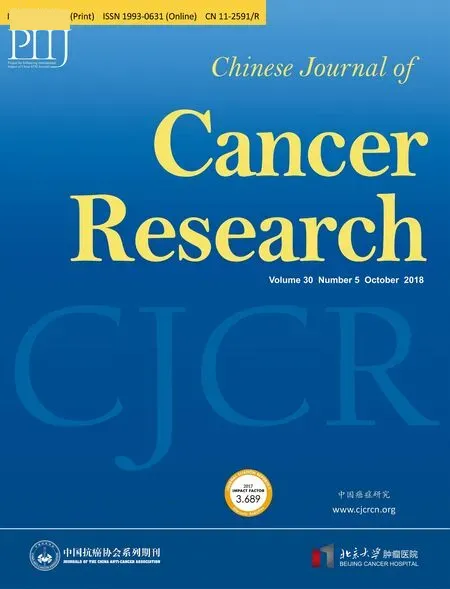Fluorescence image-guided lymphadenectomy using indocyanine green and near infrared technology in robotic gastrectomy
Jacopo Desiderio, Stefano Trastulli, Alessandro Gemini, Domenico Di Nardo, Giorgio Palazzini,Amilcare Parisi, Vito D’Andrea
1Department of Digestive Surgery, St. Mary’s Hospital, Terni 05100, Italy; 2Department of Surgical Sciences, “La Sapienza” University of Rome,Rome 00161, Italy
Abstract In recent years, some researchers have tried to find a way to improve the surgical identification of the lymphatic drainage routes and lymph node stations during radical gastrectomy, thus starting a new research frontier in this field called “navigation surgery”. Among the different reported solutions, the introduction of the indocyanine green(ICG) has drawn attention for its characteristics, a fluorescence dye that can be detected in the near infrared spectral band (NIR). A fluorescence imaging technology has been integrated in the latest version of the Da Vinci robotic system and surgeons have extensively reported their experiences in colorectal and hepato-biliary surgery for tumors, vascular and lymphatic structures visualization. However, up to date, the combined use of fluorescence imaging and robotic technology has not been adequately investigated during lymphadenectomy in gastric cancer.
Keywords: Gastric cancer; fluorescence guided surgery; robotic surgery
Gastric cancer is the fourth most widespread cancer in the world, characterized by high mortality rates (1,2) and needs a specialized management in the context of a dedicated multidisciplinary team.
Surgery is crucial in the patient’s therapeutic path and lymphadenectomy must guarantee not only the oncological radicality, but even an appropriate tumor staging. The two latest editions of the Japanese Gastric Cancer Association(JGCA) guidelines (3) have tried to standardize this procedure recommending a dissection on different levels(D1, D1+, D2), based on the type of gastrectomy and the clinical stage of the tumor.
Lymph node involvement in gastric cancer account for 2%-18% when the depth of the tumor invasion is limited to the mucosal or submucosal layer but rises to 50% when the tumor involves the subserosa, and thus lymphadenectomy is considered the most relevant factor influencing long-term survival even if still under debate (4).
In recent years, some researchers have tried to apply the concept of “sentinel lymph node” to gastric cancer (5-7)with the aim to develop a different lymphadenectomy concept.
Although some authors do not consider that terminology the appropriate one in the context of gastric cancer,because of the multidirectional gastric lymphatic flows,several studies have highlighted interesting aspects, such as:trying to limit an extensive lymphatic dissection when not necessary, identifying the drainage routes outside the standard anatomical planes, and possible assistance in minimally invasive procedures (8).
Most of the experiences in lymph nodes mapping were performed with a radio-isotope (Tc99m) associated or not with the intraoperative use of vital dyes (Blue dye), but more recently, the properties of the indocyanine green(ICG), a fluorescence dye that can be detected in the near infrared spectral band, have been studied (9,10).
The development of imaging tools using infrared spectral band (NIR)/ICG technology is therefore an innovative approach for visualizing tumors, vascular structures, lymphatic channels and lymph nodes (11).
Some advantages of the ICG are: reduced toxicity,absence of radioactivity, low cost, safe administration both intravenous and endoscopical through the submucosa or subserosa, protein binding without changing molecular structures, and macrophages interaction at the lymph node level.
Devices for fluorescence imaging are currently available in both open and minimally invasive surgery and in the latter, robotic surgery has been becoming of great interest thanks to the manufacturing of new instruments which,compared to laparoscopy, allow to improve manual skills and gentleness in challenging movements (12).
The Da Vinci Xi robotic system has produced an innovative imaging technology for ICG visualization made up with a laser source integrated in the robotic camera (Firefly).
Therefore, the surgeon at the console has a 3-D vision that can switch to the fluorescence mode without the need to change the camera. Few clinical experiences have been reported to date (12) and with the most published articles that discuss its use in colorectal and hepato-biliary surgery for vessels or biliary structures visualization, while its adoption during lymph node dissection for gastric cancer has not yet been the subject of study protocols.
Fluorescence imaging during lymphadenectomy in gastric cancer can significantly improve the quality of the dissection through a better visualization of anatomical planes allowing tailored dissections. Moreover, the tumor status in the fluorescent nodes could predict the nodes status in the overall specimen with high accuracy rate.
Thus, new research projects in this field should verify the feasibility and the role of a lymphadenectomy assisted by fluorescence imaging during robotic gastrectomy through two levels of investigation: 1) detecting the possible advantages of a fluorescence-guided surgery (“Navigation Surgery”); and 2) evaluating the possibility of considering the lymph nodes labeled by the ICG as a predictive factor of the state of tumor diffusion (“Targeted Surgery”).
Acknowledgements
None.
Footnote
Conflicts of Interest: The authors have no conflicts of interest to declare.
 Chinese Journal of Cancer Research2018年5期
Chinese Journal of Cancer Research2018年5期
- Chinese Journal of Cancer Research的其它文章
- Clinical study of ultrasound and microbubbles for enhancing chemotherapeutic sensitivity of malignant tumors in digestive system
- Probe-based confocal endomicroscopy is accurate fordifferentiating gastric lesions in patients in a Western center
- A comparative study of totally laparoscopic distal gastrectomy versus laparoscopic-assisted distal gastrectomy in gastric cancer patients: Short-term operative outcomes at a high-volume center
- Immunohistochemical expression of thymidylate synthase and prognosis in gastric cancer patients submitted to fluoropyrimidine-based chemotherapy
- Oxaliplatin plus S-1 or capecitabine as neoadjuvant or adjuvant chemotherapy for locally advanced gastric cancer with D2 lymphadenectomy: 5-year follow-up results of a phase II-III randomized trial
- Feasibility of personalized treatment concepts in gastrointestinal malignancies: Sub-group results of prospective clinical phase II trial EXACT
